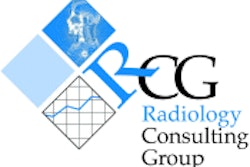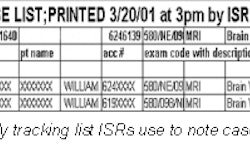By Ajit Singh, Siemens Medical Solutions
As healthcare organizations begin to take advantage of new Web-based technologies, the marketplace is beginning to see changes that will ultimately improve not only doctor and patient relationships, but also cost-efficiencies, workflow, and quality of care.
Until recently, the idea of a physician retrieving patient data while out of the office, scheduling appointments online, or consulting with other hospital staff via wireless messaging was largely in the realm of fantasy. In the real world, hospitals had to follow procedures riddled with inefficiencies to acquire equipment and supplies. The time healthcare staff had to spend obtaining patient histories, lab results, x-ray images, or pharmaceutical information could have been better spent on patient care.
Today, several trends have coalesced to create a more effective and efficient experience for both healthcare providers and patients. Four key areas where the healthcare industry is beginning to leverage the power of the Internet are the integration of patient data, remote access to information, application service provider (ASP)/networked services, and e-business.
Electronic patient records spur efficiency
The first complete electronic patient records are finally becoming reality, helping providers reduce costs, expand accessibility, and ultimately become more efficient operations. Data sent from medical equipment is integrated with the hospital’s information technology (IT) systems to give clinicians real-time access to pertinent clinical data such as lab results, pharmaceutical information, patient histories, test results, and medical images anytime, anywhere. The future holds advantages for computerized patient records that go far beyond today's uses, however.
There is no doubt that patients see the efficiency of not having to give their name and date of birth 10 times to 10 different people on the same day in one hospital or clinic. Now, imagine these records coupled with technology such as "smart cards," which allow the patient to drive into the healthcare facility’s parking lot and put a card into the entrance slot.
With one simple action, the patient is charged for parking and is instantly registered in your doctor's office for your exam, so the staff can be ready when the patient arrives in the office, with no waiting or tedious paperwork to fill out.
Remote access to everything
Having all of a patient’s information in one digital place makes it very easy to access by more than one person at a time, and from anywhere a doctor might be located -- including remote sites outside of the healthcare facility. Anywhere, anytime access to patient histories, lab and test results (as soon as they are available), and patient vital signs (as they are happening) means doctors can provide patients with the highest levels of care.
One illustration of the power of remote access would be a physician who gets a page or a call on his cell phone while at home. The doctor calls the nurse on site, and views the patient's vital signs, along with CT images, medication information, and patient history on his home PC. The physician can then instantly instruct the nurse or on-site physician on how to properly care for the patient.
Today, several vendors offer Internet portals for integrated, immediate information, allowing physicians to gain secure access to patient-lifetime clinical records and patient results -- including radiology images -- delivered right to their desktops as soon as the results are known.
In addition to patient medical records and lab results, Internet portals for doctors provide access to up-to-date medical reference information and links to continuing medical education. Doctors also can gain access to the decision-support tools they need for managing and treating patients, such as protocols, clinical guidelines and best-practice blueprints, and access to daily health, financial, and general news. These portals benefit not only doctors, but patients as well, because their caregivers are given more information. Thus equipped, doctors can presumably make better decisions and function better as a team.
In the future, these online tools should include home-based products, such as a device that can check a patient’s blood pressure at various times of day and upload these readings to a clinical provider. Tools such as these will help prevent disease by providing education and preventive services online.
"Net-sourcing" for higher productivity
The old trend toward outsourcing is quickly becoming "net-sourcing" as more and more industries look to ASPs to host software and services. ASPs in the healthcare sector give companies access to highly targeted application software and services on a subscription basis -- which allows hospitals to get the benefits of networked, secure IT systems without the investment in IT infrastructure, resources, or risks associated with implementing such a system in-house.
Typically, ASP healthcare companies offer services such as remote processing of applications, data storage, and networking operations. For hospitals, the services help improve productivity, help to ensure that patient data is secure, and ease compliance with regulatory guidelines.
E-health: the next evolution in healthcare
New e-business approaches are the next evolution in the way the business of healthcare is conducted as they equip healthcare providers with easier processes and more information. The Internet allows manufacturers and vendors to provide healthcare organizations with product information, procurement, training, instructions, and tips to support their everyday tasks.
Providers will also be able to access this information 24 hours a day, seven days a week, and will also gain the ability to significantly reduce administrative costs by ordering products and supplies online. New programs can be uniquely solution-focused and personalized, allowing customers to search on the basis of specific needs and concerns, rather than by product.
We are also witnessing the rise of e-health exchanges such as the Global Healthcare Exchange, where buyers and sellers of all kinds of medical products and services (including those from competing vendors) can connect with one another to transact business electronically. These exchanges give hospital purchasers a powerful platform for all procurement-related activities, including equipment acquisition, information gathering and evaluation, and administrative work.
Marketplaces will also be supported by meta-catalogues, chat rooms, and online forums, as well as supplier directories, electronic ordering, online negotiating, budgeting assistance, and user training and installation support. Ultimately, buyers should be able to reduce the administrative costs of the purchasing process by up to 70%, and even find improved decision support, all of which will help create more efficient and effective healthcare systems.
These trends are just beginning to shape the future of healthcare. Hospitals and healthcare providers must continually search for and find better ways to function efficiently if they are to prosper in the years ahead. Those who embrace this new wave of technologies will gain an impressive array of benefits -- including greater efficiencies, cost benefits, and most important, improved patient care.
By Ajit Singh, Ph.D.
AuntMinnie.com contributing editor
September 4, 2001
Ajit Singh is the former group vice president for e.health business at Siemens Medical Solutions, and currently serves as president of the Oncology Care Systems division of Siemens Medical Solutions.
Copyright © 2001 AuntMinnie.com


















